Scottish Marine and Freshwater Science Volume 3 Number 1: Scoping study for tidal stream energy development in Scottish waters
Scottish Marine and Freshwater Science Vol 3 No 1: Scoping study for tidal stream energy development in Scottish waters
4 Results of the MaRS Modelling
4.1 Technical Resource Assessment
The technical resource assessment provides the necessary background against which the range of environmental, socio-cultural and industry factors must be assessed. Unlike offshore wind (and to a degree wave energy), the areas with potential for tidal stream energy developments in Scottish waters are strongly limited by the availability of the power resource. Areas with potential for large commercial developments are found off some headlands, and in some sounds and firths between islands and larger land masses. A mean spring peak tidal current of 1.5 ms -1 is an approximation of the minimum speed required by currently available generating devices for economic return. Such strong currents occur only within Scottish Territorial Waters and are not found in Scottish marine waters further offshore. The resource areas identified from the resource assessment are shown in (Figure 1a). The tidal stream energy resource areas in Scotland are:
A. Pentland Firth
B. Orkney and Westray
C. Sumburgh and Fair Isle
D. North Skye
E. South west Islay and Kintyre
F. Solway Firth
The geographical extent of these areas is large enough for there to be opportunities for fully commercial scale development of tidal stream energy projects.
The maximum currents are found in the Pentland Firth area, and is some firths in the Orkney and Westray area. Strong currents are also found South west of Islay. The dominance of the tidal resource in the Pentland Firth is further illustrated by the spatial extent of high mean power density in the area (Figure 1b).
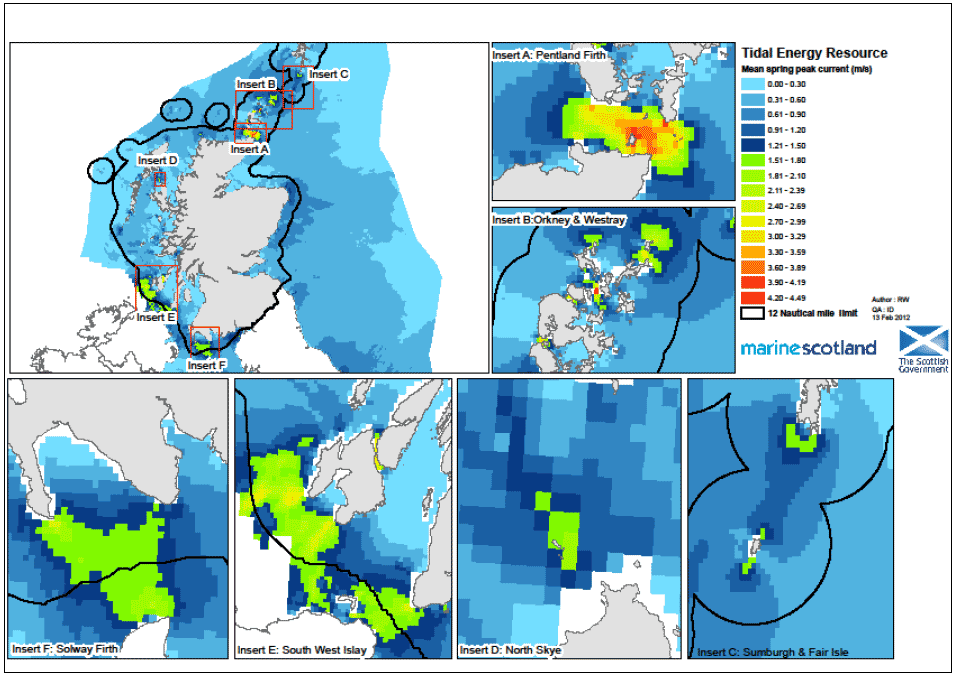
Figure 1a Mean spring peak current (ms -1) in tidal stream energy resource areas in Scottish waters.
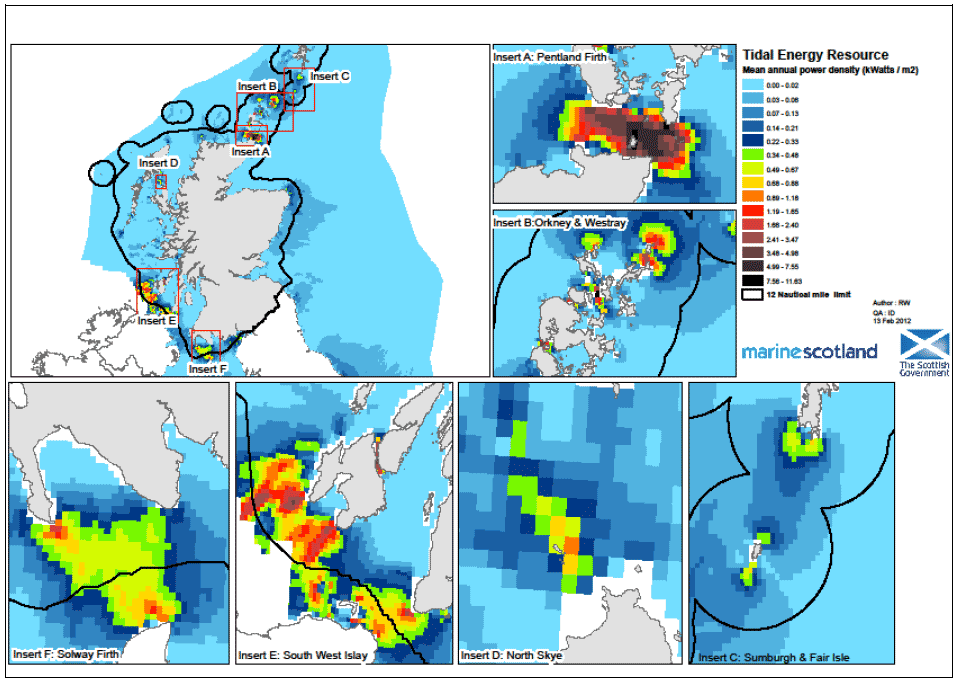
Figure 1b Mean annual tidal power density (kW/m 2) at tidal stream energy resource areas in Scottish waters.
4.2 Industry Restriction Model
The output from the Industry restriction model (Figure 2) is dominated by the predominance of current "industrial" activity in the coastal zone, particularly shipping routes, with fishing grounds and military exercise areas extending into more offshore areas.
4.3 Environment Restriction Model
The output from the Environment restriction model (Figure 3) again indicates greater levels of constraint in inshore waters. Relatively high levels of constraint in the North and South Minches are influenced by their importance to seabirds and marine mammals. The designated areas around Rhum and St Kilda, and in the inner Moray Firth are prominent, as is the general importance of waters off the east coast between Peterhead and Berwick to seabirds.
4.4 Socio-cultural Restriction Model
The output from the Socio-cultural restriction model (Figure 4) generally indicates low levels of constraint in most areas of Scottish waters. The areas where greatest constraint is encountered are dominated by areas close to the coast, and particularly areas in and adjacent to National Scenic Areas, where some importance of landscape considerations may be anticipated, particularly for devices that are not wholly submerged. Further contributions to heritage restrictions arise from yachting and sailing activity, surfing beaches and the potential for sub-sea archaeological remains.
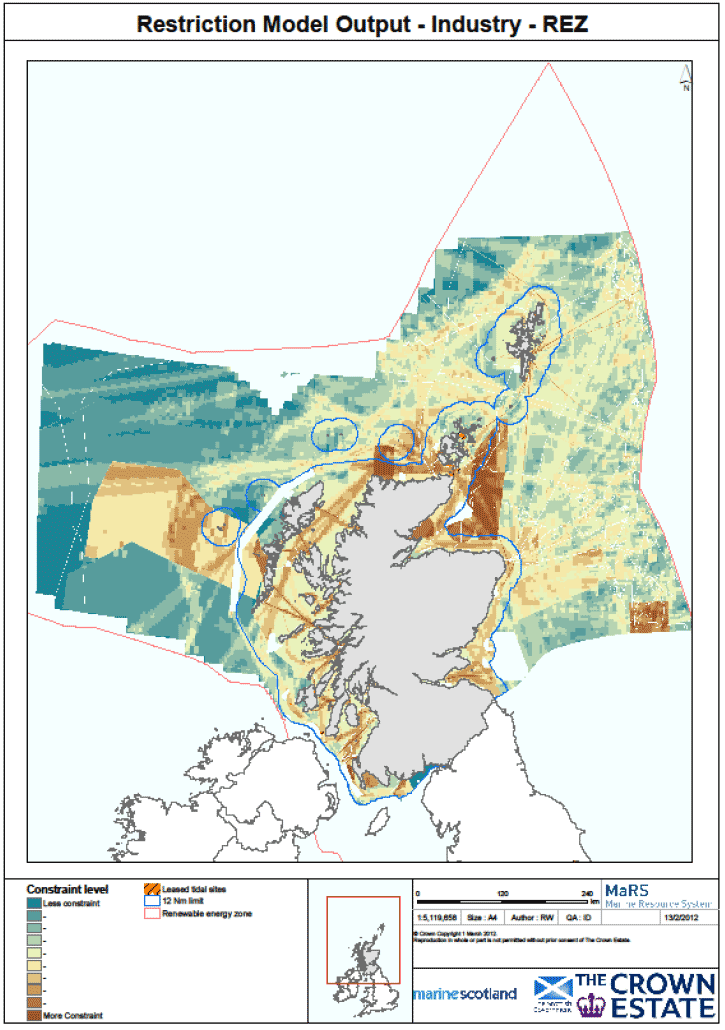
Figure 2 Output from the Industry Restriction model for tidal stream energy development in Scottish waters.
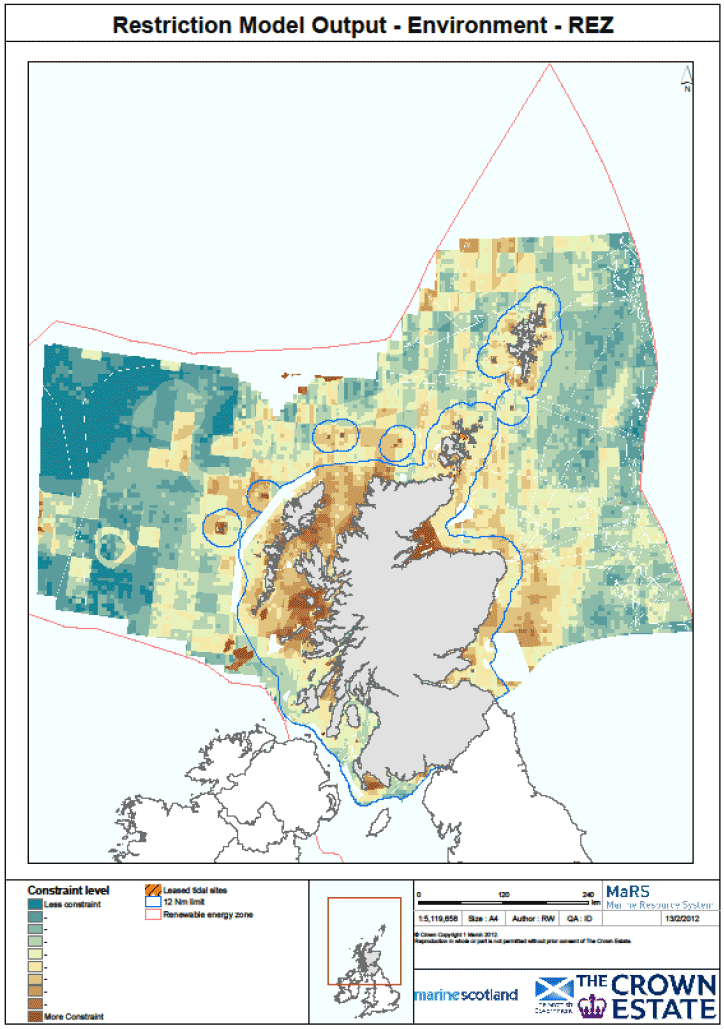
Figure 3 Output from the Environmental Restriction model for tidal stream energy development in Scottish waters.
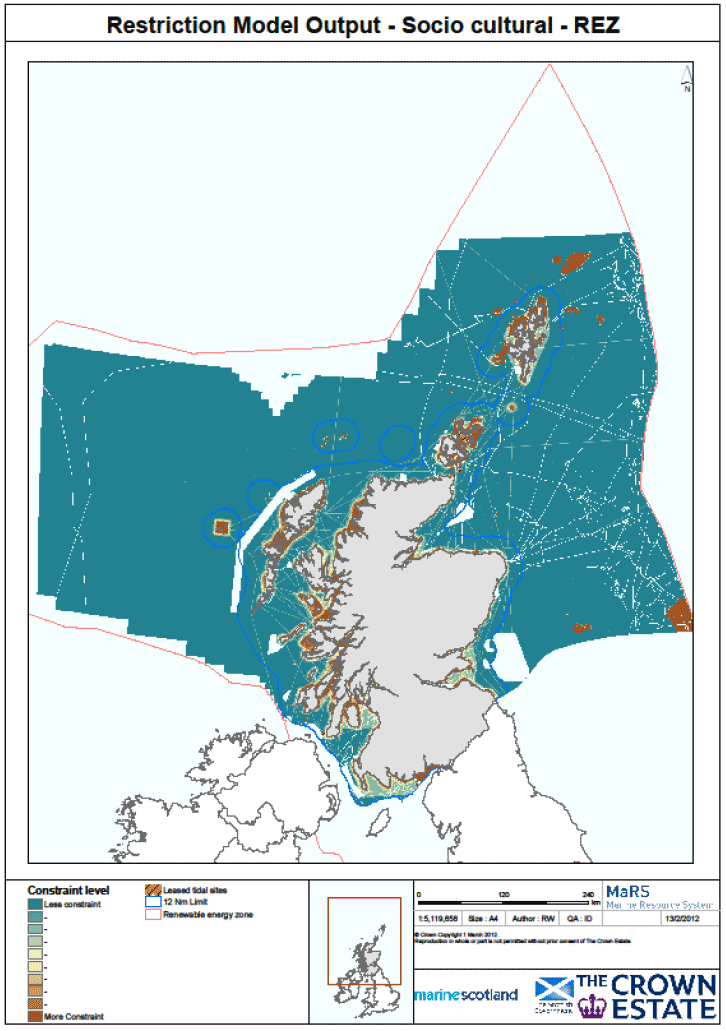
Figure 4 Output from the Socio-cultural Restriction model for tidal stream energy development in Scottish waters.
4.5 Combined Models
An expression of the overall level of constraint on tidal stream energy developments in Scottish waters needs to take account of environmental, industry and socio-cultural restrictions. The presentation of the information by theme has been shown to reduce the difficulties inherent in developing relative weightings for very diverse types of data (e.g. the relative weighting of seabird colonies, wrecks, fish landings, and basking shark sightings). The current Scoping Study has been carried out with the minimisation of consenting risk in mind. Having grouped the data and developed thematic restriction models, it is now possible to combine the models within MaRS and assess the sensitivity of the outputs to variation in the overall weighting between themes. This approach had previously been used successfully in the Scoping Study for the Saltire Prize
Four Combined models were created, in which the relative weightings of the themes were changed. In an Equal Weighting model, the three themes were weighted equally. Three further models were developed, in which each of the themes was assigned a weighting equal to the sum of the weightings for the other two themes, as in Table 1.
Table 1
| Environmental theme | Industry theme | Socio-cultural theme | MaRS model ref. | Figure | |
|---|---|---|---|---|---|
| Equal weighting constraints model | 100 | 100 | 100 | 2581 | Figure 5 |
| Environmental focused constraints model | 200 | 100 | 100 | 2584 | Figure 6 |
| Industry focused constraints model | 100 | 200 | 100 | 2583 | Figure 7 |
| Socio-cultural focused constraints model | 100 | 100 | 200 | 2582 | Figure 8 |
The resultant models covering Scottish waters out to 200 nm are shown in Figures 5, 6, 7 and 8.
There are some broad similarities between the outputs, i.e. features that are not very sensitive to the relative weightings of the three themes:
1 Constraint is generally a coastal phenomenon. Most of the activities in the sea, from all three themes, are concentrated in coastal waters. The degree of constraint decreases with distance from the coast. This is particularly clear in the North Minch area, where waters east of the Western Isles are generally highly constrained, while those to the west of the Western Isles show much lower levels of constraint.
2 On the east coast, the most constrained areas are in the inner and outer parts of the Moray Firth and some nearshore areas . The degree of constraint generally decreases seawards.
3 The North and South Minch are generally moderately to strongly constrained. However, there are areas on the west coast further south, west and south west of the Inner Hebrides, where the degree of constraint is much less. The level of constraint in inshore waters between the Inner Hebrides and the mainland is generally similar to, or greater than that in the Minch.
4 The degree of constraint off the east coast of Scotland south of the Moray Firth is less than in the Minch.
5 The model emphasising socio-cultural interests is dominated by the distribution of National Scenic Areas landscape issues in the inshore waters west of Scotland in Orkney and Shetland. Landscape is generally considered to be a less significant issue for tidal energy projects than for wind power projects, as several of the tidal stream devices currently being considered for testing or commercial deployment are wholly submerged. It may be anticipated that wholly submerged devices, or those which emerge from the sea to only a small degree would be considered to have less interaction with the landscape.
6 The degree of constraint in offshore waters in the Solway Firth is generally low to moderate. However, issues of conservation designation and landscape clearly increase the sensitivity in waters immediately adjacent to the coast, for example in Luce Bay.
7 Generally, the levels of constraint outside STW is much less than that within STW. It is also decreases with distance offshore outside STW, such that at 30-40 miles offshore the levels of constraint are generally very low. There will be some sensitive areas, such at those associated with the oil and gas industry, or actively used for military purposes (training and testing), where development may not be appropriate.
Given the level of similarities in output, the model that weights the three themes equally (output shown in Figure 5) was taken forward and used to develop areas of search for plan options for tidal stream energy developments within STW.
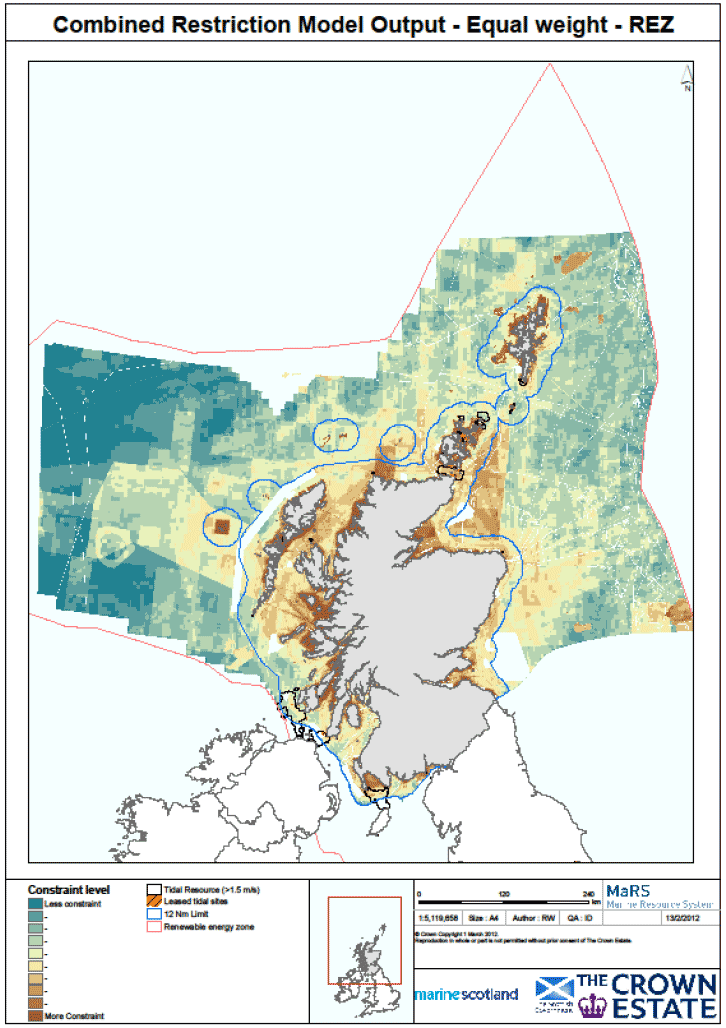
Figure 5 Combined restriction model, giving equal weight to the environmental, industry and socio-cultural themes.
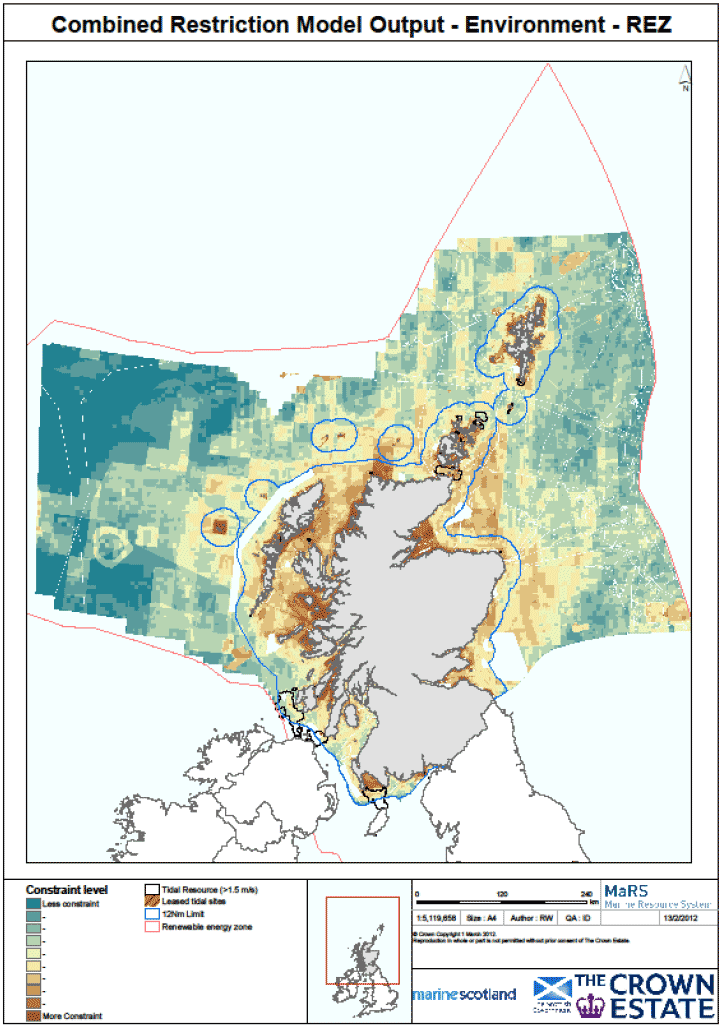
Figure 6 Combined restriction model, emphasising the environmental theme.
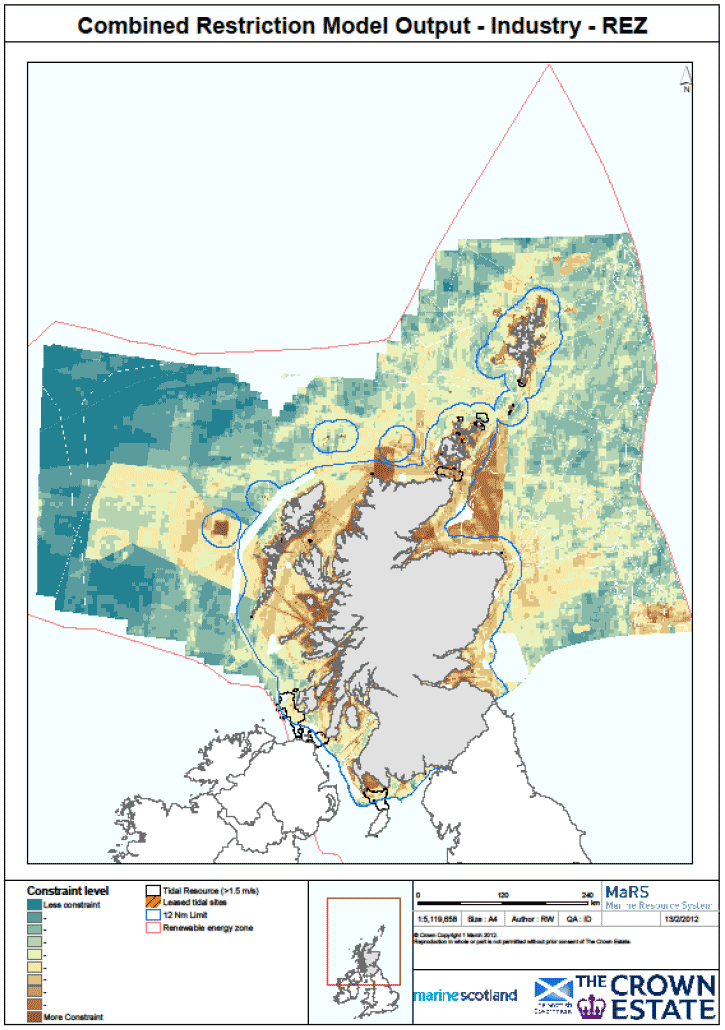
Figure 7 Combined restriction model, emphasising the industry theme.
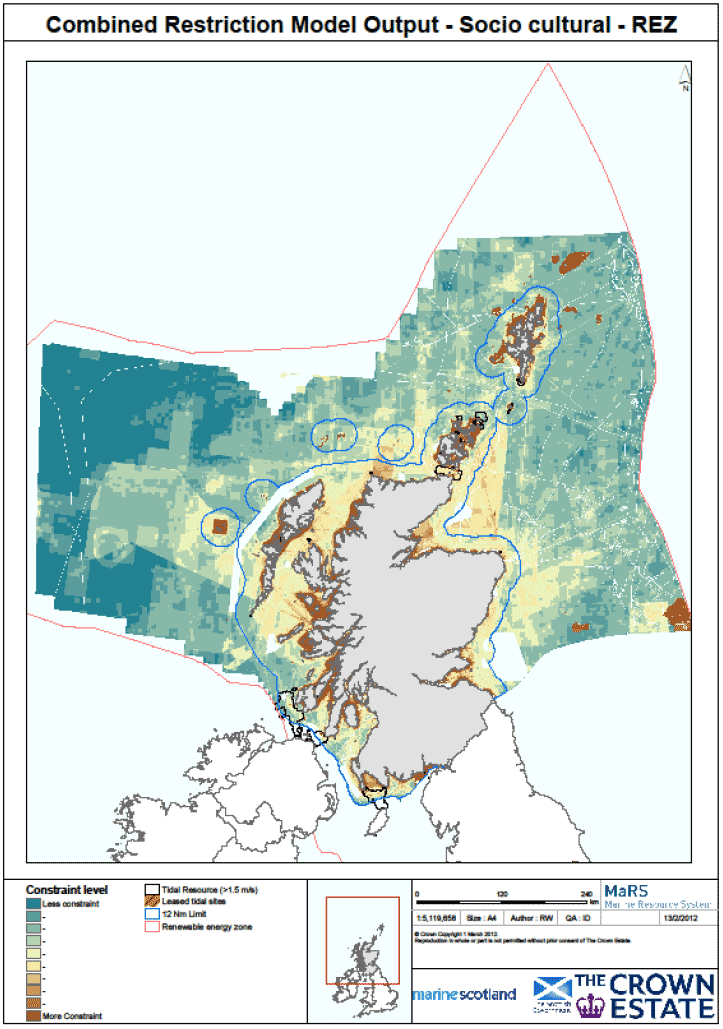
Figure 8 Combined restriction model, emphasising the socio-cultural theme.
Contact
There is a problem
Thanks for your feedback